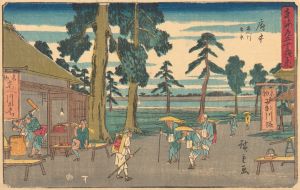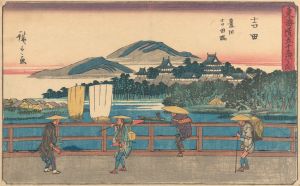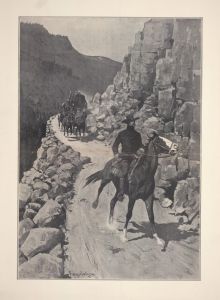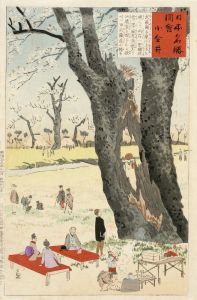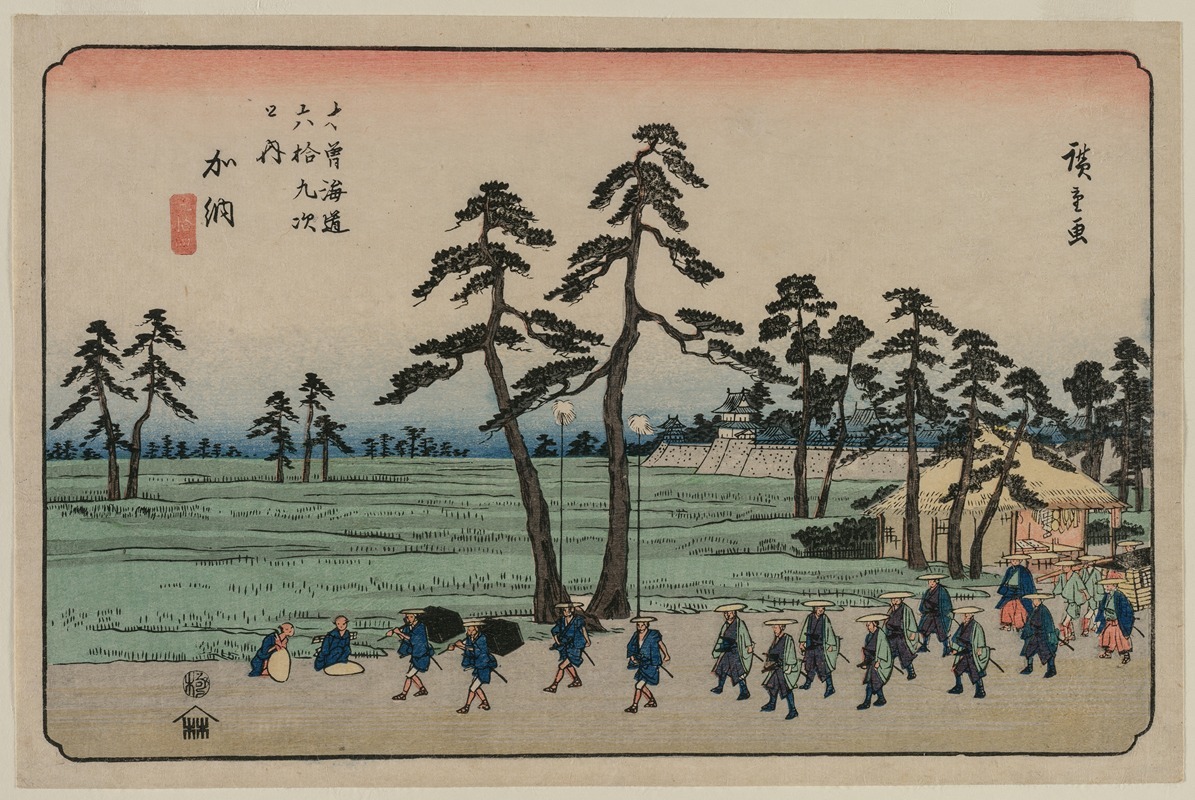
Kanō, from the series Sixty-nine Stations of the Kisokaidō
A hand-painted replica of Andō Hiroshige’s masterpiece Kanō, from the series Sixty-nine Stations of the Kisokaidō, meticulously crafted by professional artists to capture the true essence of the original. Each piece is created with museum-quality canvas and rare mineral pigments, carefully painted by experienced artists with delicate brushstrokes and rich, layered colors to perfectly recreate the texture of the original artwork. Unlike machine-printed reproductions, this hand-painted version brings the painting to life, infused with the artist’s emotions and skill in every stroke. Whether for personal collection or home decoration, it instantly elevates the artistic atmosphere of any space.
Andō Hiroshige, a renowned Japanese ukiyo-e artist of the Edo period, is celebrated for his landscape prints and his ability to capture the essence of Japan's natural beauty and daily life. One of his notable series is the "Sixty-nine Stations of the Kisokaidō," which he co-created with Keisai Eisen. This series depicts the scenic journey along the Kisokaidō, one of the five routes of the Edo period, connecting Edo (modern-day Tokyo) with Kyoto. The route was known for its picturesque landscapes and was a popular subject for artists and travelers alike.
The print "Kanō" is one of the stations in this series. Each station in the series corresponds to a post town along the Kisokaidō, where travelers could rest and resupply during their journey. Hiroshige's work is known for its vivid colors, dynamic compositions, and the ability to convey the atmosphere of the locations depicted. In "Kanō," Hiroshige captures the unique characteristics of the area, providing a glimpse into the life and environment of the time.
Hiroshige's style is characterized by his use of perspective and his ability to depict weather conditions and seasons, which adds a layer of emotional depth to his landscapes. His prints often include human figures, animals, and elements of nature, creating a harmonious balance between the natural and human worlds. This approach allows viewers to feel as though they are part of the scene, experiencing the journey along the Kisokaidō themselves.
The "Sixty-nine Stations of the Kisokaidō" series is significant not only for its artistic merit but also for its historical value. It provides insight into the travel culture of the Edo period and the importance of the Kisokaidō as a major transportation route. The series also reflects the changing social and economic conditions of the time, as travel became more accessible to a broader segment of the population.
Hiroshige's work, including the "Kanō" print, has had a lasting impact on both Japanese and Western art. His influence can be seen in the works of Western artists such as Vincent van Gogh and Claude Monet, who admired Hiroshige's use of color and composition. The cross-cultural exchange of artistic ideas during the 19th century helped to shape the development of modern art, with Hiroshige's prints playing a significant role in this process.
Today, Hiroshige's prints are highly valued by collectors and art enthusiasts worldwide. They are considered masterpieces of ukiyo-e and are featured in major museum collections, where they continue to be studied and appreciated for their artistic and historical significance. The "Kanō" print, like others in the series, serves as a window into the past, offering a glimpse of the landscapes and life along the Kisokaidō during the Edo period.





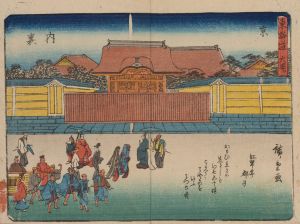
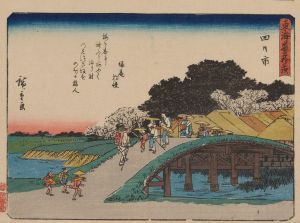

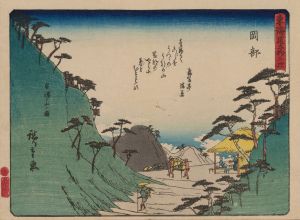
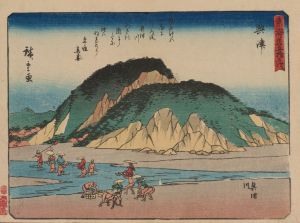
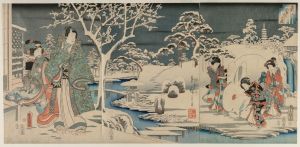
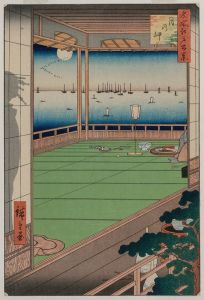
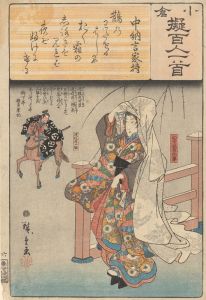
![Tora-no-mon-gai; Aoi Hill, Outside the Tiger Gate [Tora-no-mon]](/imgs/213040/s/ando-hiroshige-toranomongai-aoi-hill-outside-the-tiger-gate-toranomon-6629cde0.jpg)
